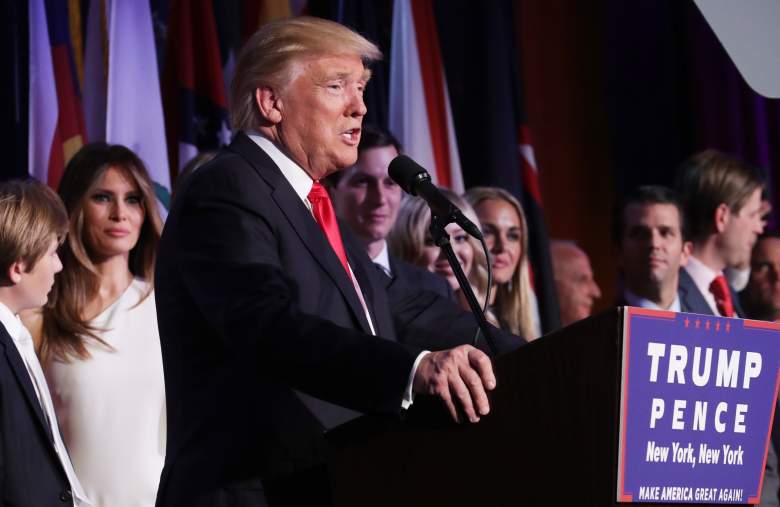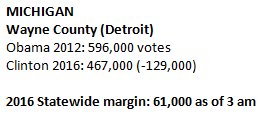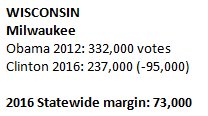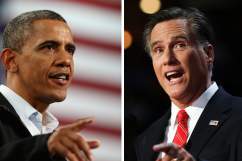
(Getty)
Over 231 million Americans are eligible to vote. However, based on early results from the 2016 Presidential election, just over 130 million of them voted for either Hillary Clinton or Donald Trump. In some of the key battleground states that decided the election, less than a few thousand votes decided the result, proving how important every vote really is and how important it is to motivate your party.
The election was also a lesson on why the number of votes isn’t what matters, but where the votes came from. Although Clinton’s popular vote lead just reached 2 million, she still clearly lost the electoral college vote. Trump beat her in that department with 290 electoral college votes.
As more numbers come in, this post will continue to be updated.
Here’s what you need to know about voter turnout.
An Estimated 57.9 Percent of Eligible Voters Voted in 2016
Projections from the United States Elections Project show that there were 231,556,622 Americans eligible to vote, but 138,884,643 voted. That means that 40 percent didn’t vote, while 60 percent did. The voter turnout will likely increase as the popular vote continues to be counted.
| Voting Eligible Population Ballots | Voter Eligible Population That Didn’t Vote | Voter Eligible Population Total |
| 138,884,643 (60 percent) | 92,671,979 (40 percent) | 231,556,622 |
This number is not the same number as registered voters. Politico reported in October 2016 that the data firm TargetSmart calculated that there were 200 million people registered to vote, an increase from 146.3 million registered to vote in 2008. Eleven states also allowed same-day voter registration.
The Elections Project notes that there were 251,107,404 people who classify as members of the voting-age population, therefore 115,449,897 of the voting-age population (or 46.3 percent) did not vote. (The U.S. Census bureau estimates that there are over 320 million people living in the U.S.)
This is different from the voting-eligible population because there are over 3.2 million people ineligible to vote as felons. The Sentencing Project estimates that 2.5 percent of the U.S. voting-age population cannot vote because of a felony record.
The number of eligible voters who turned out in 2016 was a slight increase in eligible voter turnout from 2012. FEC data from that election shows that 54.87 percent of the voting-age population cast a vote for president, or 129,085,410 of the 235,248,000 voting age population cast a vote. However, 2016 was still far from the high reached in 2008, when 58.23 percent of the voting-age population participated. In 2008, 131,313,820 total votes were cast.
Interestingly enough, the Election Project’s latest updates show that 136,489,372 voters voted for the highest office. That means 2,395,271 people didn’t vote for President, even though they did vote.
It’s not How Many Votes, but Where the Votes Come From That Matters
The number of voters might have been up nationally, but if everyone registered to vote really did cast a vote, the results would might have been different. Based on data from The Associated Press and the New York Times, Clinton received 65.84 million votes, or 48.1 percent of the total popular vote. Trump received 62.97 million votes, or 46.0 percent. But since Trump earned victories in Wisconsin, Florida, Ohio and North Carolina, he easily won the electoral college with 306 votes. Clinton beat Trump by nearly 3 million votes in the popular vote.
Here’s the popular vote chart, based on projections from the New York Times.
| Candidate | Vote Total | Percentage |
| Hillary Clinton | 65,844,610 | 48.1 |
| Donald Trump | 62,979,636 | 46.0 |
Although Clinton did receive more votes overall, Trump’s razor-thin victories in Michigan, Wisconsin, Florida and Pennsylvania gave him the electoral vote lead needed to win the presidency.
Voter Turnout Wasn’t Great in States Important for Trump’s Victory
As the above chart shows, Clinton’s real weakness was her inability to motivate the Democratic base like her predecessor. Although Trump’s Republican votes aren’t significantly less or more than Mitt Romney’s in 2012 and John McCain’s in 2008, Clinton is far behind Obama’s 2008 and 2012 levels.
Clinton’s failure in this aspect can be found by looking at the results in Midwest cities. While she won Wayne County, Michigan, which includes Detroit, she only received 517,000 votes. In 2012, Obama won that county with 595,253 votes. Obama went on to win Michigan, but Clinton lost the state to Trump.
Clinton also lost Wisconsin, a state that instituted a controversial voter ID law between the 2012 and 2016 elections. While Clinton won Milwaukee County, the margin of victory was not at Obama’s level. There, Obama won with 328,090 votes, compared to Clinton’s 288,986.
| Wisconsin Turn-Out* | ||
| Voting Eligible Population Ballots | Voter Eligible Population That Didn’t Vote | Voter Eligible Population Total |
| 2,935,000 (68.3 percent) | 1,360,057 | 4,295,057 |
| *based on statistics from the United States Elections Project |
| Michigan Turn-Out* | ||
| Voting Eligible Population Ballots | Voter Eligible Population That Didn’t Vote | Voter Eligible Population Total |
| 4,800,000 (64.6 percent) | 2,631,589 | 7,431,589 |
| *based on statistics from the United States Elections Project |
Turn-out in New Hampshire was on the higher-end, at 70.3 percent. Clinton won the state with 2,528 votes. The only other state to pass 70 percent among voting-eligible voters was Minnesota, with 74 percent. Pennsylvania, a state Trump won by less than 70,000 votes, had a voting-eligible voter turnout of 61.1 percent, with just over 5.95 million votes.
| New Hampshire Turn-Out* | ||
| Voting Eligible Population Ballots | Voter Eligible Population That Didn’t Vote | Voter Eligible Population Total |
| 732,000 | 309,147 | 1,041,147 |
| *based on statistics from the United States Elections Project |
In Michigan, the difference between Trump and Clinton is just 11,837 votes. (Gary Johnson earned 173,021 votes.) In Wisconsin, the difference between Trump and Clinton was just 27,257 votes. If she got the same number of votes Obama received in Milwaukee County alone, she would have made up the difference.




